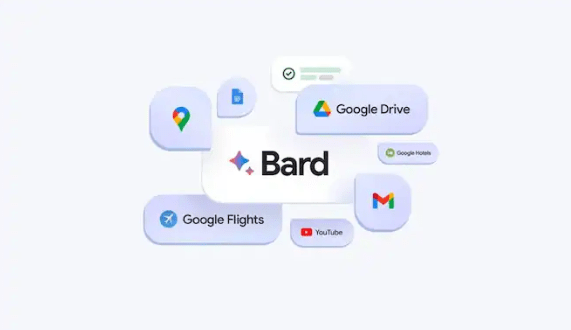Now Bard can analyse youtube videos
Google has unleashed a series of updates to its Bard AI chatbot, reshaping the landscape of conversational AI. The most notable among these updates is Bard’s newfound ability to decipher and respond to specific queries related to YouTube video content, marking a significant leap forward in enhancing user engagement with video content.

This development builds upon the earlier introduction of the YouTube Extension in September, which initially allowed users to find specific videos. Now, Bard takes it a step further, enabling users to pose intricate questions about the content within videos. For instance, users can inquire about the number of eggs required in a recipe featured in a cooking video, showcasing Bard’s evolving capability to understand and interact with the visual medium.
The announcement aligns with YouTube’s recent experiments in generative AI features, including a conversational tool that responds to questions about video content in real-time and a comments summarizer tool that organizes discussions efficiently. This dual approach reflects Google’s commitment to enriching user experience and fostering a more dynamic interaction with the platform.
Simultaneously, Google has extended access to Bard for teenagers globally, offering a unique tool for learning, exploration, and problem-solving. Bard serves as a resource for teens to seek inspiration, discover hobbies, and navigate everyday challenges. Whether it’s advice on university applications or tips on learning a new sport, Bard provides a safe and educational space for young users.
To further broaden Bard’s utility, Google has introduced extensions that integrate with its suite of apps and services, including Gmail, Docs, Drive, Maps, YouTube, Flights, and hotels. This expansion is rooted in Google’s commitment to transparency, choice, and control. Users can opt in to allow Bard to interact with specific services, ensuring that personal data usage is limited and transparent. The extensions also allow Bard to collaborate seamlessly with various services, providing a comprehensive experience.
A significant highlight of the new extensions is the integration with Gmail, where Bard can assist in summarizing important emails, offering a glimpse into a future where AI becomes an indispensable tool in managing digital communication. Despite the potential, Google emphasizes the importance of maintaining user trust, assuring that personal data won’t be used for reinforcement learning, and no human reviewers will access the emails accessed by Bard.
To enhance the reliability of Bard’s responses, a new “double-check” feature has been introduced. Users can now validate Bard’s answers by tapping the “G” icon, prompting a cross-reference with Google search results. This feature not only ensures accuracy but also addresses the challenge of AI “hallucination,” where responses may be generated based on false information.
The extensions can collaborate intelligently, exemplified by Bard’s ability to retrieve information from Gmail threads and seamlessly transition to real-time flight and hotel searches, Maps directions, and even suggest related YouTube content—all within a single conversation. This interconnected functionality reflects a holistic approach to AI integration across different aspects of users’ digital lives.
Shifting gears to YouTube’s experimentation with generative AI features, the platform is set to introduce a conversational tool and a comments summarizer. The conversational tool, powered by large language models, enables users to interact with AI while watching videos, opening up new possibilities for a more immersive viewing experience. The comments summarizer, on the other hand, leverages generative AI to condense and organize extensive comment sections, providing a quick overview of discussions.
These experiments underline YouTube’s commitment to exploring innovative ways to enhance user engagement and provide creators with valuable insights. By harnessing AI, YouTube aims to make interactions more dynamic, relevant, and efficient, ushering in a new era of content consumption.
In a separate development, the autonomous vehicle sector is witnessing a significant event as Cruise, the self-driving technology company, faces fines in California for withholding crucial details regarding a robotaxi accident. The incident highlights the evolving challenges and ethical considerations surrounding the deployment of AI-driven technologies, prompting a broader conversation about accountability and transparency in the AI landscape.
In conclusion, Google’s Bard AI is at the forefront of a transformative era in conversational AI, redefining the way users engage with content and services. From decoding YouTube videos to seamless integrations with Google’s suite of apps, Bard’s evolution is a testament to the continuous efforts to enhance user experience. As AI continues to permeate various aspects of our digital lives, it becomes imperative to balance innovation with ethical considerations, ensuring a future where AI serves as a trusted and reliable companion in our daily endeavours. For all my daily news and tips on AI, Emerging technologies at the intersection of humans, just sign up for my FREE newsletter at www.robotpigeon.beehiiv.com






